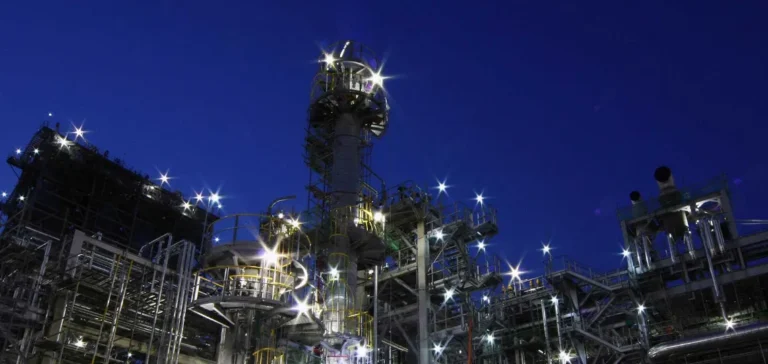South Korea has announced a large-scale restructuring of its petrochemical industry. On August 20, the country’s ten largest groups signed an agreement with the Ministry of Industry to cut their naphtha cracking capacity by 2.7 to 3.7 million tons annually, or about 25% of a national capacity estimated at 14.7 million tons. The decision is intended to curb a crisis driven by persistent oversupply and falling production margins.
Finance Minister Koo Yoon-cheol stated that companies must submit detailed restructuring plans by year-end, while urging industry leaders to act as early as next month. He warned that tax, financial, and regulatory aid would be strictly reserved for firms able to demonstrate substantial recovery efforts, excluding any support for groups labeled as “free riders.”
An Industry Under Pressure from Chinese Competition
The restructuring comes as China increased its naphtha cracking capacity to about 36 million tons in 2024, up from 22 million in 2017. This production surge, supported by aggressive industrial policies, has reduced Chinese imports of South Korean petrochemical products, which still accounted for 42% of Seoul’s exports in 2019. According to ICIS, the spot price of ethylene in Asia fell by 35% between 2021 and 2024, significantly reducing profitability for South Korean producers.
The average utilization rate of South Korean cracking units dropped to 74% in 2024, down from more than 90% in the previous decade. Companies not integrated into refining appear especially vulnerable to this competitive pressure, relying more heavily on volatile global markets.
Mergers and Shutdowns in Preparation
In Daesan, Lotte Chemical Corp. and HD Hyundai Co. are exploring a merger of their cracking centers, with HD Hyundai Oilbank contributing industrial assets. In Ulsan, SK Innovation Co. and Korea Petrochemical Ind. Co. are considering a coordinated capacity reduction. In Yeosu, the country’s largest petrochemical hub, seven crackers are clustered around a single refinery, pushing GS Caltex, LG Chem, and Lotte Chemical to weigh asset-sharing or joint operations.
Meanwhile, Yeochun NCC Co. (YNCC) suspended its third cracker in August due to liquidity problems. While a permanent closure is on the table, disagreements between its two main shareholders, DL Chemical and Hanwha Solutions, are delaying a decision. Analysts believe a single shutdown will not be sufficient to meet government targets, making larger-scale mergers and consolidations more likely.
A Major Financial Risk
A report by Boston Consulting Group, commissioned by the Korea Chemical Industry Association (KCIA), highlights that 48% of South Korea’s petrochemical firms show fragile solvency. The sector’s net debt-to-EBITDA ratio reached 5.3 in 2024, a level deemed critical by rating agencies. According to BCG, nearly half of producers could default within three years if the current trend continues.
The government stresses the need for rapid adjustment. The restructuring aims to avoid a wave of bankruptcies that would undermine a sector accounting for 20% of South Korea’s industrial exports and employing about 110,000 people directly.
Shift Toward Specialty Chemicals
The agreement goes beyond capacity cuts. It also includes a strategic pivot toward higher-value products, such as advanced polymers and specialty chemicals for automotive, electronics, and biomedical industries. These activities require heavy R&D investments, estimated at $50 million to $120 million per project by the Korea Development Institute. The government announced the creation of a dedicated fund through the Korea Development Bank to support conversion initiatives.
This shift demands a deep organizational transformation, moving from a volume-based to a value- and innovation-driven model. It also requires a commercial repositioning, with stronger client relationships in more technical and differentiated segments.
Managing the Social and Regional Transition
The reorganization will focus on the three main industrial hubs: Yeosu, Daesan, and Ulsan. The Ministry of Industry is also considering designating Seosan as an industrial crisis zone, which would activate local public aid and guaranteed loans to limit job losses. The measure aims to mitigate the social impact of a restructuring deemed unavoidable by authorities.
Social pressure remains high, as the sector is a key pillar of regional economies in several port cities. Labor unions are already demanding guarantees on jobs and retraining programs for affected workers.
A Repositioning in an Unstable Global Market
The South Korean plan takes place in a global context marked by the end of the petrochemical supercycle observed between 1992 and 2021. Demand is fragmenting under the weight of geopolitical tensions, demographic slowdown in East Asia, and climate imperatives. Climate change is expected to reshape the geography of demand, disproportionately affecting vulnerable economies in the Global South.
At the same time, artificial intelligence technologies are being developed in the sector. Several South Korean groups are testing AI to optimize unit maintenance, improve supply chain management, and accelerate the development of recyclable polymers. If effectively integrated, these innovations could help boost competitiveness in an increasingly unstable environment.






















